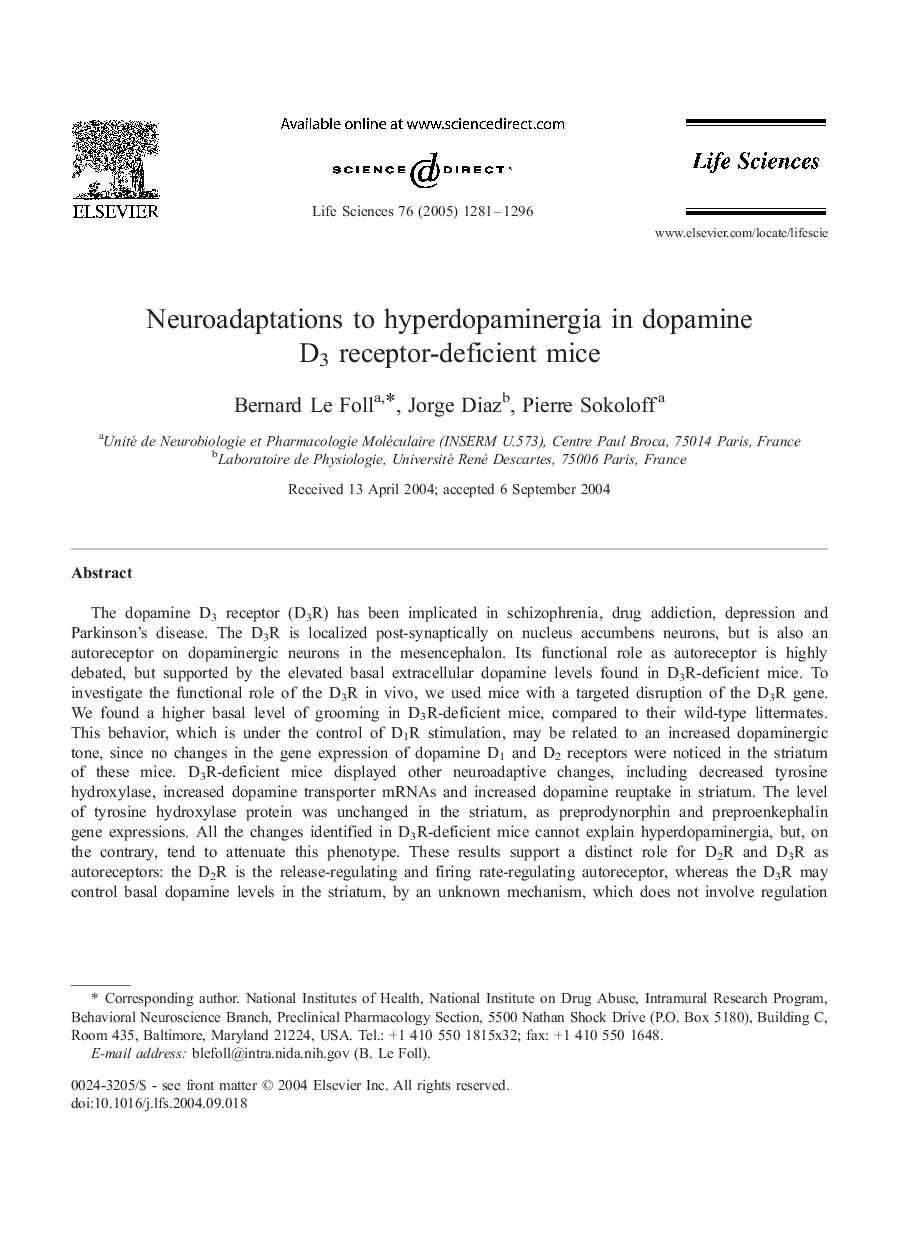| Article ID | Journal | Published Year | Pages | File Type |
|---|---|---|---|---|
| 9012978 | Life Sciences | 2005 | 16 Pages |
Abstract
The dopamine D3 receptor (D3R) has been implicated in schizophrenia, drug addiction, depression and Parkinson's disease. The D3R is localized post-synaptically on nucleus accumbens neurons, but is also an autoreceptor on dopaminergic neurons in the mesencephalon. Its functional role as autoreceptor is highly debated, but supported by the elevated basal extracellular dopamine levels found in D3R-deficient mice. To investigate the functional role of the D3R in vivo, we used mice with a targeted disruption of the D3R gene. We found a higher basal level of grooming in D3R-deficient mice, compared to their wild-type littermates. This behavior, which is under the control of D1R stimulation, may be related to an increased dopaminergic tone, since no changes in the gene expression of dopamine D1 and D2 receptors were noticed in the striatum of these mice. D3R-deficient mice displayed other neuroadaptive changes, including decreased tyrosine hydroxylase, increased dopamine transporter mRNAs and increased dopamine reuptake in striatum. The level of tyrosine hydroxylase protein was unchanged in the striatum, as preprodynorphin and preproenkephalin gene expressions. All the changes identified in D3R-deficient mice cannot explain hyperdopaminergia, but, on the contrary, tend to attenuate this phenotype. These results support a distinct role for D2R and D3R as autoreceptors: the D2R is the release-regulating and firing rate-regulating autoreceptor, whereas the D3R may control basal dopamine levels in the striatum, by an unknown mechanism, which does not involve regulation of dopamine transporters or tyrosine hydroxylase. This hyperdopaminergia phenotype of D3R-deficient mice may explain their hyperactivity to drug-paired environmental cues.
Keywords
Related Topics
Health Sciences
Medicine and Dentistry
Cardiology and Cardiovascular Medicine
Authors
Bernard Le Foll, Jorge Diaz, Pierre Sokoloff,
